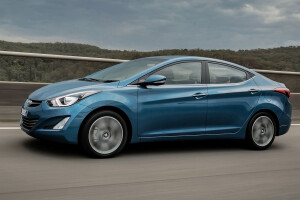Latest Review

2020 Hyundai Elantra Review
The Hyundai Elantra is a great-driving small sedan, with nicely weighted steering and lots of features for the money.
What stands out?
The Hyundai Elantra is a great-driving small sedan, with lots of features for the money, that comes in sedate and more sporty turbocharged versions. Steering is nicely weighted, and a hands-free boot and autonomous emergency braking is available. The turbocharged Sport and Sport Premium are quite quick, and reward driving skill and enthusiasm.
What might bug me?
If you have chosen an Elantra Sport or Sport Turbo, driving at 80km/h on your space-saver spare until you can fix your full-sized flat tyre. (The other Elantras carry a full-sized spare.)
What body styles are there?
Four-door sedan only. (Hyundai sells a similarly sized small hatchback called the i30.)
The Elantra is front-wheel drive, and is classed as a small car, lower priced.
What features do all Elantras have?
Cruise control, and a reversing camera.
A sound system with Aux and USB inputs, Bluetooth connectivity for phones and audio streaming all controllable from a colour touchscreen.
Support for Apple CarPlay and Android Auto, which lets you plug in your smartphone and operate and view apps from the touchscreen.
Height and reach adjustment for the steering wheel, from which you can operate the cruise control, and audio system and your phone. Height adjustment for the driver’s seat.
Headlights that come on automatically in low light. There are also daytime running lights, which help other road users see you.
Power folding exterior mirrors with heating to stop fogging.
Hill-start assist, which helps you take off on uphill slopes by controlling the brakes automatically.
Either a full-sized spare wheel and tyre, or (in Sport and Sport Premium) a space-saver spare.
Six airbags. Anti-lock brakes, and electronic stability control - which helps you control a skid. (For the placement of airbags, and more on Elantra safety systems, please open the Safety section below.)
The Elantra is covered by a five-year, unlimited kilometre warranty, and has a capped-price service plan.
Which engine uses least fuel, and why wouldn't I choose it?
Two engines are available in an Elantra: a 2.0-litre four-cylinder petrol (which powers the less costly Elantras), and a much stronger 1.6-litre turbocharged four-cylinder petrol (which powers the Elantra SR).
For fuel use there is not much between them. Both consume 7.2 litres/100km in automatic form on the official test cycle (city and country combined).
In the real world, which is the more fuel-efficient will depend a lot on how you drive your Elantra. In comparison testing for Wheels magazine, it was the turbo 1.6 that did better, averaging 7.9 litres/100km (the 2.0-litre averaged 8.5).
The turbo 1.6 is an impressively powerful and responsive engine. The more humdrum 2.0-litre is nevertheless a good engine by the standards of popular small cars. (It feels more willing than the 1.8-litre that powered the previous-generation Elantra – and smoother.)
The Elantra Go is available with a six-speed manual or six-speed automatic transmission, the Active only comes with an automatic.
The 1.6-litre Elantra Sport and Sport Premium offer a six-speed manual or a seven-speed dual-clutch auto.
What key features do I get if I spend more?
The least costly Elantra, the Go, comes with cloth-covered seats, 7.0-inch touchscreen, manually controlled air-conditioning, 15-inch steel wheels, six-speaker audio, the 2.0-litre petrol engine, a manual gearbox, and the features in any i30.
You can spend about $2000 for an auto gearbox, in which case you get a conventional auto with its around-town friendliness. You can also get auto-folding powered mirrors as an extra-cost option.
Spend more on the Active and you gain a bigger 8.0-inch touchscreen, satellite navigation that doesn’t depend on your phone, eight-speaker premium audio system, digital radio, leather-appointed steering wheel and gear knob, the auto-folding door mirrors, rear parking sensors, and 16-inch alloy wheels that look nicer than steel wheels and don’t need plastic trim.
The Go automatic and Active are also available with Hyundai’s SmartSense active safety package as an extra-cost option. Priced around $1700, it adds adaptive cruise control, autonomous emergency braking that works at city and highway speeds, Lane-keeping assist, a driver-attention alert, blind-spot detection, and a rear cross-traffic alert. (For more on these systems, please open the Safety section below.)
Spend more for an Elantra Sport and you get SmartSense as part of the price along with the 1.6-litre turbocharged engine, and a more sophisticated multi-link rear suspension design that improves handling.
You also get dual-zone climate-control air-conditioning (which will maintain different temperatures for the driver and front passenger), rear air vents, bigger 18-inch alloy wheels with lower-profile Michelin Pilot Sport 4 tyres, LED daytime running lights, extremely bright bi-xenon headlights, rain-sensing wipers, and seats trimmed in a mix of real and fake leather.
The Sport also gets push-button start, and smart keyless entry that lets you unlock the car (and drive away) while the key remains in your pocket or bag. Leave the key there and stand near the boot for three seconds, and the boot lid will open – a helpful feature if you have your arms full of shopping or luggage.
A range of aesthetic touches inside and out supply a sportier look and feel, and the dual-clutch automatic version also has paddle shifters on the steering wheel for when you want a more manual-like driving engagement.
Spending more again for a Sport Premium brings you heated front seats, 10-way power-adjustable driver’s seat, height-adjustable front passenger seat, wireless phone charging pad, front parking sensors, sunroof, and auto-dimming rearview mirror.
Does any upgrade have a down side?
The Sport and Sport Premium have a harder ride than other Elantras because of their firmer multi-link rear suspension and lower profile tyres that provide less cushioning.
The Sport and Sport Premium have a smaller temporary spare wheel with recommended top speed of just 80km/h.
The sunroof in the Sport Premium causes a slight reduction in headroom, most noticeably for those seated in front.
How comfortable is the Elantra?
Inside, the Elantra shares themes with several other recent Hyundais. For example, control buttons are large and well labelled, making it easy to operate the infotainment system. Menu selector buttons just below the touchscreen are particularly useful.
Otherwise, the presentation is very conservative. A prominent grain runs through the dash and door plastics. Silver-look finishes across the dash and on interior door handles are very obviously plastic. A chrome-look strip surrounding the touchscreen is more lustrous.
Very tall people will love the excellent fore-aft adjustment available from the driver’s seat. The seat gives decent support in the right places. Vision out is good, too.
With this Elantra, Hyundai has focused a lot of attention on refinement. The cabin is very quiet, noise from the engine intruding only when you work the car hard. Over poor-quality B-roads there’s occasional booming from the rear suspension, but you notice that mainly because other sounds are suppressed.
The 2.0-litre engine has good punch for suburban driving, and the auto transmission shifts smoothly.
The steering has some weight to it but is light enough for easy parking and low-speed manoeuvring. The Elantra rides quite nicely over suburban bumps and comfortably on country roads.
The Sport and Sport Premium bring a bit more excitement inside, with huggy sports seats and flat-bottomed steering wheel. And notwithstanding its more handling-oriented brief, its suspension – tuned exhaustively overseas and in Australia – delivers a consistent and acceptably soothing ride. The main thing you might wish for here is a slightly lower driving position, which would stir in some more sporting flavour.
What about safety in a Hyundai Elantra?
Every Elantra has stability control, six airbags, and daytime running lamps. A reversing camera and rear parking sensors help protect anyone who strays behind the car.
Auto-on headlights add security around dusk, switching on before you might think you needed them.
The airbags are in the usual places: two directly in front of the driver and passenger; one beside each front occupant to protect their bodies from side impacts; and a curtain airbag along each side that protects heads front and rear from side impacts.
A very comprehensive “SmartSense” active safety suite aimed at helping you avoid collisions (it’s an extra cost option in the more affordable Go and Active). It comprises adaptive cruise control, autonomous emergency braking, lane-keeping assistance, a driver-attention alert, blind-spot detection (with Lane-change assist), and a rear cross-traffic alert.
The adaptive cruise control can reduce your speed automatically to maintain a safe distance from a slower car ahead on the highway, until you can overtake.
The autonomous emergency braking uses radar and camera sensors to scan the road ahead of you, and works in two speed-ranges at up to 180km/h. In both ranges, if the system registers a hazard ahead (at city speeds this could be a pedestrian), it will first issue a warning, intervening only if you ignore it. At speeds under 80km/h, it will then apply heavy braking automatically, attempting to stop the car and avoid a collision. At speeds over 80km/h it will apply partial braking, with the aim of reducing your collision speed.
The lane keeping assistance looks for signs you are drifting wide of your lane – perhaps from fatigue or distraction. It can gently adjust the steering, to arrest the drift and attract your attention. If you are about to join another lane without indicating, it will sound and flash an alarm.
The driver attention alert monitors your steering and braking. If they show signs you are falling asleep, it suggests you take a break.
Blind-spot detection uses rear-facing radars to keep tabs on what is happening near your rear corners, alerting you to vehicles that might not show in your mirrors. If you indicate to change lanes into the path of an adjacent car, it will flash an alert in the relevant mirror and sound an alarm. The closely related Lane change assist does the same if a car is approaching quickly from further behind – typically because it is preparing to overtake you.
Rear cross-traffic alert uses the same rear-facing sensors when you are reversing, for example from a shopping centre parking space. It sounds a warning if another car is about to cross behind you.
The Australasian New Car Assessment Program (ANCAP) rated the Elantra at five stars for safety, its maximum, in May 2016. The five-star rating applies to the Elantra SR Turbo also.
I like driving - will I enjoy this car?
The Elantra Go and Active are more about trouble-free motoring than carving up curves. That said, both are impressively competent on challenging roads, settling well over most bumps and delivering good grip – for a city-focused car.
The steering has a nice feel to it, with enough weight and feedback to bring confidence.
The 2.0-litre engine happily revs hard, giving you respectable acceleration. Its strength, though, is in more relaxed driving, where it responds well to the accelerator and supplies good urge when you want it.
The six-speed conventional automatic is less effective for sporty driving, in so far as it will change to a taller gear as soon as you lift off the accelerator. (Many modern autos will hold the gear you were in.) However, the Elantra will hold gears if you slide the gear selector into manual mode, and trigger the changes yourself.
The Sport and Sport Premium swap the other Elantras’ torsion-bar rear suspension for a multi-link set up, and adds retuned front suspension and slightly more direct steering. The result is a warm sedan that loves to be driven hard – and gets better the longer and harder you drive it. Handling feels fluid and progressive, and the car will squat onto its outside rear tyre and fire itself through bends carrying serious speed. The turbocharged engine serves up loads of meaty, accessible grunt.
How is life in the rear seats?
There’s good leg room for those in the back, and only a small lump in the centre of the floor - ensuring good foot space for all.
Less impressive is head room: tall people will find their heads graze the roof, which slopes down towards the back of the car. Headrests are adjustable.
The centre seat is very narrow: two is the rear-seat limit for adults if you want to be comfortable.
The Elantra Elite and SR Turbo supply rear air vents, to circulate air-conditioning directly to rear passengers.
How is it for carrying stuff?
From the outside the boot looks quite small, but pop it and there’s a deep, broad space. It’s relatively short but has room for a couple of big suitcases.
There’s a 60/40 split-folding rear seat, allowing long items to protrude into the cabin.
The Elantra Elite allows you to open the boot hands-free, part of its smart-key entry system. If you approach the rear of the car while carrying the key (even in a bag), you will hear beeps for three seconds and then the boot will open automatically. It’s great if you’ve got handfuls of shopping, or are carrying something with both hands.
The Elite also has an elasticised luggage net that inhibits small items or shopping bags from rolling about.
Where does Hyundai make the Elantra?
All Elantras are produced in South Korea.
What might I miss that similar cars have?
Satellite navigation, which is standard on the Elantra’s sister hatchback, the Hyundai i30, and available on many other small cars. (But you can navigate via a smartphone, using Apple CarPlay or Android Auto.)
An efficient electric or hybrid powertrain. While neither is available in an Elantra, they are in the similarly sized and equipped Hyundai Ionic. The Toyota Corolla sedan also has a hybrid version.
Among other small sedans you might consider are the Mazda 3, Subaru Impreza, Honda Civic, and Kia Cerato.
Are there plans to update the Elantra soon?
This sixth-generation Elantra went on sale about March 2016 in Active and Elite form, with the SR Turbo arriving about six months later.
In late 2018 Hyundai dropped the Elite and SR variants for the 2019 model year and added the new entry-level GO, and Sport and Sport Premium versions. The range received a facelift and gained features already available in the i30 hatchback including SmartSense active safety.
Hyundai recently revealed its next-generation Elentra that will go on sale in 2021.
I like this car, but I can’t choose which version. Can you help?
The value pick here is the Elentra Sport. It is a driver’s sedan of real substance, and well worth its price premium if you get out of town a bit and enjoy your time behind the wheel.
Score breakdown
Things we like
- Comfort
- Equipment
- 1.6-litre turbo
Not so much
- Auto braking an extra-cost option for half the range
News
-
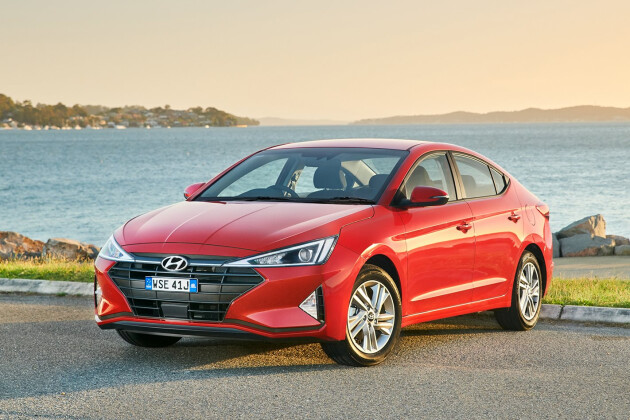 News
NewsNew cheaper model for 2019 Hyundai Elantra range
A new lower price and more turbocharged models are the highlights of the 2019 Hyundai Elantra line-up – but don’t buy the base manual version
-
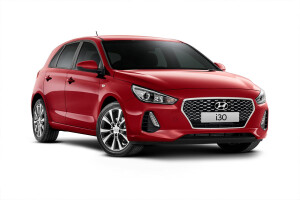 News
News2018 Hyundai i30, Elantra and Tucson Trophy editions arrive
Hyundai winds up the value equation on its volume-selling i30, Elantra and Tucson
-
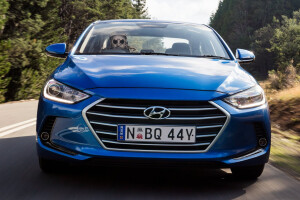 Features
FeaturesStephen Corby quenches the midlife crisis by buying a Hyundai
A seasoned automotive journalist finds the delight in his first new car buying experience
-
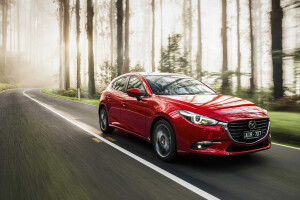 Advice
AdviceKIA Cerato vs Mazda 3 vs Hyundai i30 vs Hyundai Elantra - Which City Car Should I Buy?
Australia's most popular city cars go under the microscope
-
Hyundai Elantra: 2017 Car of the Year contender
-
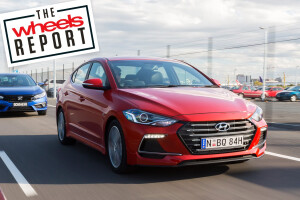
Hyundai - Wheels Report 2016
-

Car of the Year 2017: The contenders
-
.jpg)
2017 Car of the Year: Readers choice


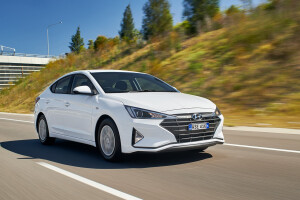


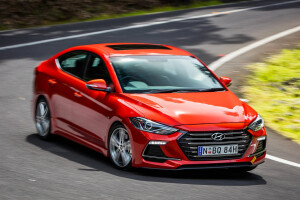
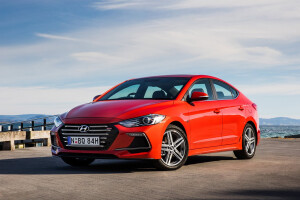
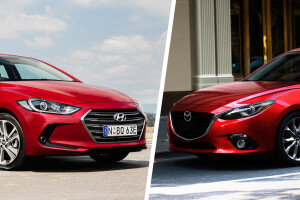
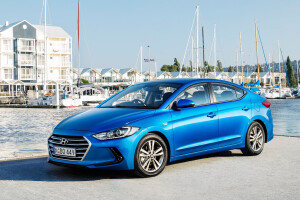

.jpg)
